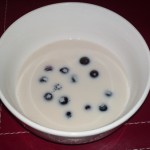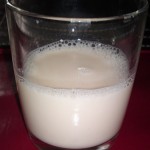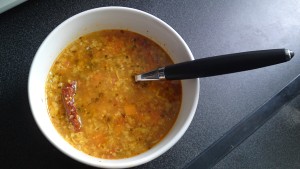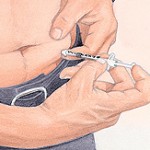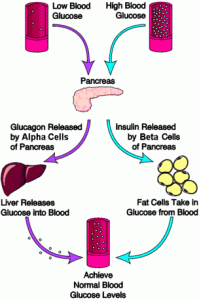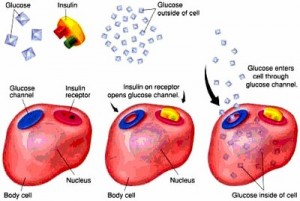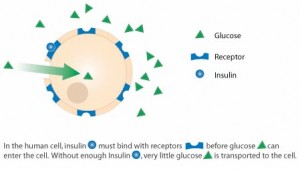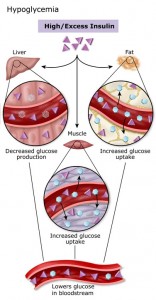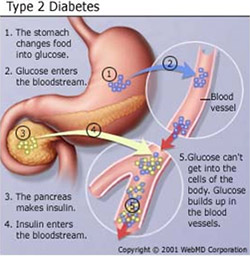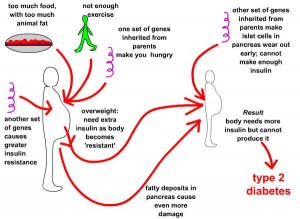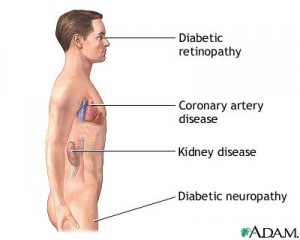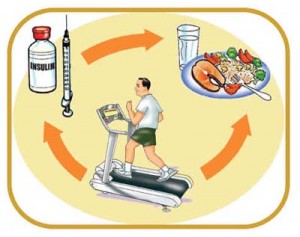Blood Sugar, Insulin and Diabetes (Day 29)
I’ve managed to keep my body stats constant today despite the lack of exercise. All my readings stayed identical: Weight: 68.1kg; Body Fat: 17.6%; Body Water: 56.6%; Body Muscle: 42.8%.
I started the day with a hot lemon juice drink. I think I might need to get myself some straws as it feels as though the citric acid in the lemon juice isn’t doing my teeth any good. For breakfast I had red quinoa, with almond milk and blueberries. Almond milk isn’t cheap. It cost me £3.19 for a 1 litre carton from Holland and Barrett, which is cheaper than the £3.35 it would have cost me from my local health store, Health Mantra. Normally I would probably have been put off by the price. But as I am doing this detox, I want to explore alternatives to the many things I have banned from my diet. So I spent almost £10 on Almond Milk, Hazelnut Milk and Quinoa Milk. So far I’ve only tried almond milk. It does taste very nice indeed. However it seems to lose its delicate taste upon heating. At over £3 per litre it’s not something I can consider as a permanent replacement to dairy milk in cereals and tea etc. However it does taste delicious enough for me to treat myself to a glass of this beverage every now and again. I am so glad I went on this detox. At first it may seem restrictive, it can be looked upon negatively as if I can hardly eat or drink anything. On the contrary it has liberated me. I have discovered so many delicious new foods I would never have tried before as they belong to different cultures of eating. This detox has allowed me to get out of my comfort zone and explore the world of food.
For lunch I finished the vegetable soup and drank caffeine free teas through the day.
In the evening I went to my parents’ house. My brother is still in London visiting for a week and my mum and nan just returned from my grandfathers funeral in Pakistan.
At my parents house I ate red lentils, karela with onions and some salad. Karela (or bitter melon) has long been used in India folk medicine and South America for the treatment of diabetes.
I discovered today that my dad may have to start injecting himself with insulin. He was diagnosed with Type 2 diabetes about eight years ago. Is his pancreas starting to pack in?
When you eat something, the carbohydrates (sugar) are absorbed from the intestine into the blood stream. When the body detects this increase in blood sugar level the pancreas responds by excreting insulin. When you eat a fast digesting carbohydrate/simple carb (high GI) a lot of sugar is released quickly into your bloodstream. On the other hand when you eat a slow digesting carbohydrate/complex carb (low GI) it is digested more slowly and released into the bloodstream at a slow steady rate.
Most cells of the body have insulin receptors which bind with the insulin which is circulating in the blood. When insulin binds with a cell, the cell then activates other receptors which then absorb the sugar from the blood stream into the cell.
Without insulin you can eat as much as you like but still be in a state of starvation because the body’s cells are unable to access the energy from the sugar circulating in the blood. This is why people who have Type 1 diabetes can become very ill if they do not take a shot of insulin as their pancreas is unable to produce insulin by itself. Without replacing insulin, the body will start to burn up its fat stores and within a few days this will lead to diabetic acidosis, which is life threatening.
Too much insulin however can lead to low levels of blood sugar that can lead to hypoglycaemia (not to be confused with hyperglycaemia – which is the opposite i.e. high levels of blood sugar) . The symptoms of hypoglycaemia are paleness, shaking, shivering, perspiration, rapid heartbeat, hunger, anxiety, blurred vision, a feeling of weakness, agitation, difficulty concentrating, irritability, fatigue, temporary loss of consciousness, confusion, convulsions, and coma. To avoid this, a diabetic should always carry food with sugar with them, preferably a high GI form so that it is digested quickly if the warning signs appear.
I have seen my father experience this before. We were sat in a van in Iraq. I think it may have been the day we saw many historical sites in Iraq, including the shrine of our ancestor, Zaid ibn Ali, from whom we get our surname, Zaidi . Our tour guide was being a bit stingy and refused to feed us lunch even though that had been part of the agreement when we paid him. We were on a long journey and my dad hadn’t eaten for a few hours. It was well past lunch time and the last time we had eaten anything was breakfast. My dad was one minute talking then all of a sudden he said “Ya Ali Maddad!” slumped in his seat while his eyes were still open and went unconcious for a few seconds. At the time I had thought that maybe he had an anxiety attack after seeing some of the millions of Iraqis who were walking from Karbala to Najaf (90km) to commemorate the death of Muhammad and the martyrdom of Hassan son of Ali. But now having informed myself about diabetes, it is obvious to me now that my dad had actually experienced the symptoms of hypoglaecymia.
People with Type 2 diabetes can produce insulin fine, however their cells do not react well to the insulin that is available in the blood and therefore the cells do not absorb the sugar in the blood well, leading to high blood sugar levels. Early in the disease process oral medications can be used to either increase insulin production or decrease insulin resistance in the cells. In the early years the pancreas will also automatically produce more insulin to compensate for the insulin resistance of the cells. Occasionally, insulin shots may be used in Type 2 diabetes to overcome the resistance of the cells to the insulin. As time passes the pancreas can lose its ability to produce insulin and insulin shots become necessary to manage glucose levels in the blood.
Sugar in the blood is not all bad. The brain runs purely on glucose and doesn’t have the ability to store it as do the muscles and liver. But before you go and munch on a candy bar to boost your brain’s long term memory, a slower release of glucose to the brain (low GI) has a much better effect compared to a high GI food. Read this brilliant webpage on how Carbohydrates Fuel your Brain.
It’s not only high GI carbohydrates that trigger the release of insulin from the pancreas in the blood, but so do low GI carbs and proteins. Check the Insulin Index to see the effect of different foods on actual insulin levels in the blood.
There is a genetic predisposition to Type 2 diabetes. Considering my dad and my mother’s father have/had Type 2 diabetes, there is even more reason for me, my brother and my sister to fight the flab. Being fat plus being related to someone with diabetes significantly increases the probability of getting Type 2 diabetes. Up to 80% of diabetes can be prevented by eating a healthy diet and exercising regularly however. So Billy and Madz, lets sort it out shall we? Before it’s too late? And mum, I think the whole family including you and nan will benefit if you support dad in his need for a change in lifestyle.
Failure to take one’s diabetes seriously and not making major changes to one’s diet and lifestyle could eventually lead to the following complications:
- Hardening of and damage to the blood vessels
- Cardiovascular disease
- Blocked arteries
- Stroke
- Heart attack
- Retinal detachment
- Diabetic retinopathy
- Glaucoma
- Cataracts
- Skin infections or deformities to the foot
- Nerve damage (diabetic neuropathy)
- You may not feel an injury to the foot due to nerve damage
- Erectile dysfunction
- Fungal infections of the skin
- Fungal infections of the female genitalia
- Fungal infections of the urinary tract
- Kidney disease
The nearer your blood sugar levels are to normal the less likely you are to develop the above symptoms. The following guidelines for a healthy lifestyle should be followed to decrease the probability of the above complications from developing:
- Do not over eat
- Exercise everyday (walk 3 miles – about 45 minutes everyday)
- Drink plenty of water to stay hydrated
- Get plenty of rest
- Eat five small, but nutritionally well balanced meals a day, rather than three large ones
- Focus on keeping your blood glucose, and therefore energy levels balanced throughout the day
- Eat fresh, healthy food, and avoid fast food that is high in fat and sugar content
- Limit protein (choose fish rather than poultry or meat)
- Avoid saturated fat (found in animal products) and trans fatty acids (hard margarine, fast foods)
Finally a link for my dad and anybody else who has diabetes. The best blog and perhaps overall online resource I have stumbled upon concerning diabetes is the blog of David Mendosa. Not only has he changed his lifestyle to manage his type 2 diabetes but he freely shares his insightful research on diabetes for the benefit of others.
